About LED Lights Different Colors, LED light bulbs, and strip lights are the best fixtures to add color and dynamism to your interior and exterior spaces. They also have the advantage of high energy efficiency. However, the white color light produced by LEDs can begin to fade or turn yellow, ruining the light quality. What causes these LED lights to have different colors? And how can you fix the issue? Read on to find out.
Why Are My LED Strips Changing Colors?
LEDs can change colors due to the following reasons.
Overheating
Overheating is one of the most typical reasons for color changing. When light strips become too hot, heat-sensitive resistors on the unit can cause a color change.

White strip lights
Voltage Fluctuations
Issues with the input voltage & power supply can cause surges or voltage fluctuations that cause LED flickering or color changing. Additionally, surges can overheat the LEDs, causing the effect described above.

An LED power supply kit
LED Lights Different Colors: Wrong Wiring
Incorrect wiring, such as connecting the ground and power wires to the wrong terminals, can make the LED bulb or strip light emit unusual light colors. Poor soldering can also cause this issue.
LED Lights Different Colors: Different Light Types
If you want a white light LED fixture but include a few color-changing LEDs, the resulting strip will emit colored light.

A color-changing light strip
LED Lights Different Colors: Faulty LEDs
Poor quality or faulty LEDs can create dark spots or uneven light output, resulting in a color change.
LED Lights Different Colors: Dimmer Switches
Dimmer switches must be compatible with LED bulbs and strips to function effectively. If incompatible, they can make them change colors.

Dimmer switches
Remote Control Issues
Remote controls run on batteries, and if they go low, they might affect the emitted LED color.
How To Fix LED Lights That Are Different Colors?
Follow these steps to fix the incorrect LED color light output issue.
Plug Everything Correctly
First, ensure you plug in every component correctly. Connect the power source correctly and link the lights to one another as required.
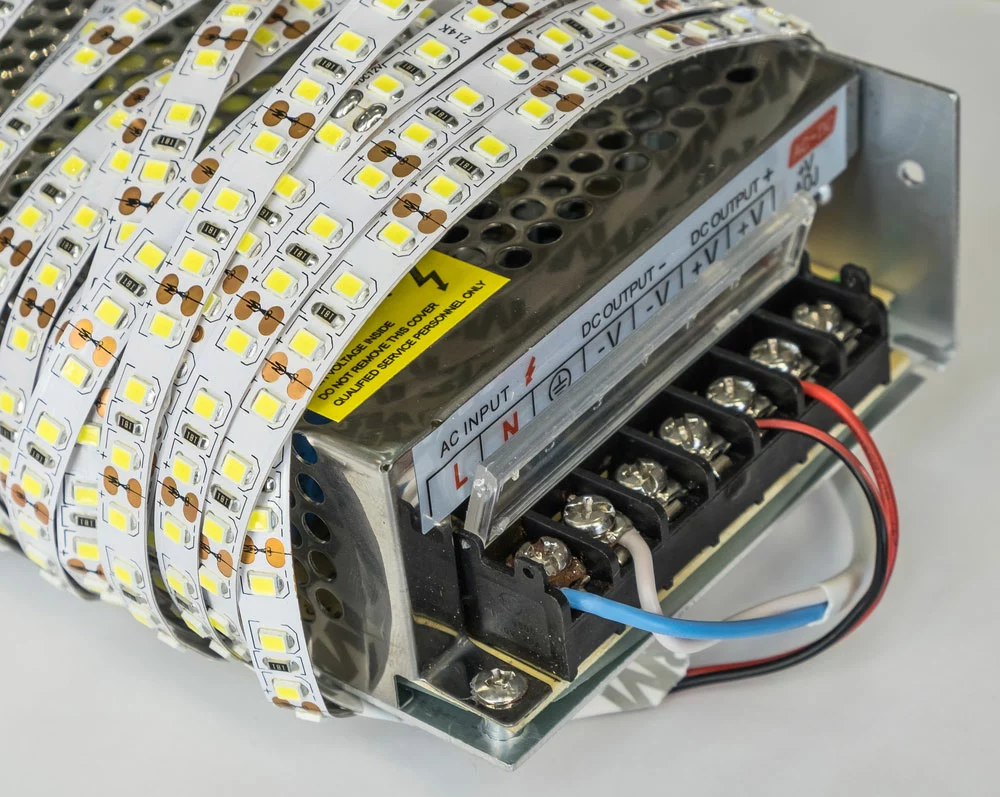
LED strip lights plugged in firmly to a power supply
Inspect the Light for Damages
After that, inspect the LEDs for any damages. Look for chips, cracks, or any other physical damage. If you come across any damaged LED, replace it with a new one.
Inspect the Strip
In addition to inspecting the LEDs, check for any physical damages on the strips, such as frayed wires, cuts, or exposed circuitry. It might be necessary to replace the entire strip if the damage is beyond repair.
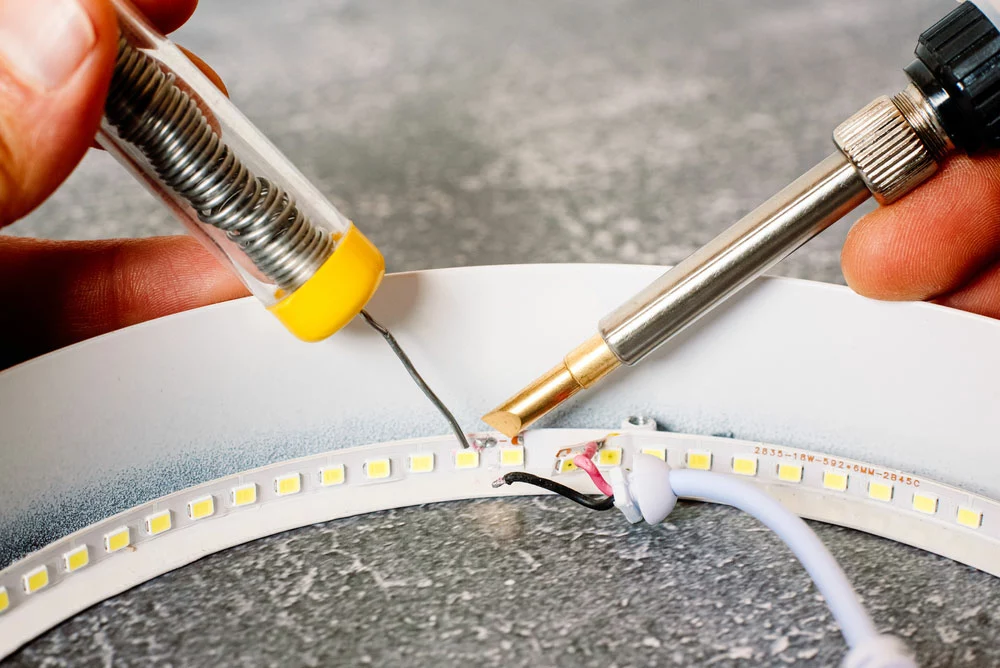
A damaged strip light is being repaired
Inspect the Power Supply
The power supply is the most typical culprit if the LEDs flicker or alter their color output. Ensure it has the correct current and voltage rating, and you can troubleshoot the issue using a different power source.
Check and Clean the Connections
LED lights have several connection points, such as power supply to strips. Check for looseness or dirt & debris, then rectify the issue. Ensure you turn off the power supply first to clean the dirt and debris.
Reset or Replace the Controller
Try resetting the controller If the LEDs still emit a different color spectrum. If the issue persists, replace the controller and ensure you get one that matches the power required by your LED light set.
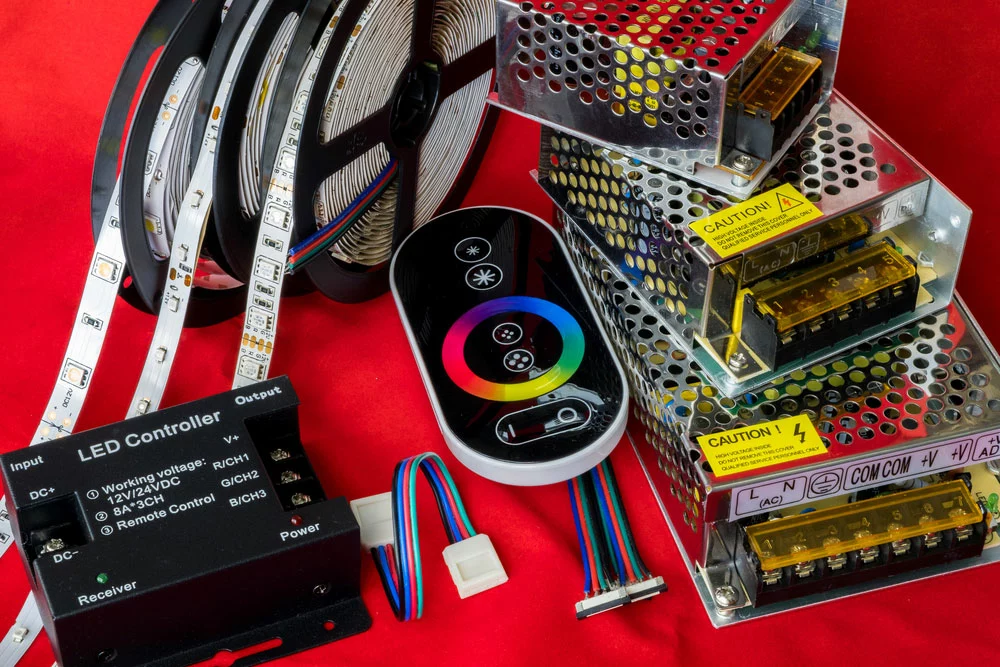
An LED strip kit with all the components
Get a Professional To Check The Lights
Troubleshoot all other issues, and if you can’t manage to fix the problem, consult or take the lights to a professional for troubleshooting.
How To Fix Power Drop for LED Lights?
A power drop happens when an LED light’s voltage drops, causing dimming or flickering. It can occur due to failing drivers, loose/frayed wires, or a damaged light fixture.
If the issue is with the driver, replacing this component is an easy process. But if the driver has no faults, check the wiring. Ensure all connections are secure and tight to avoid loose or frayed wires.
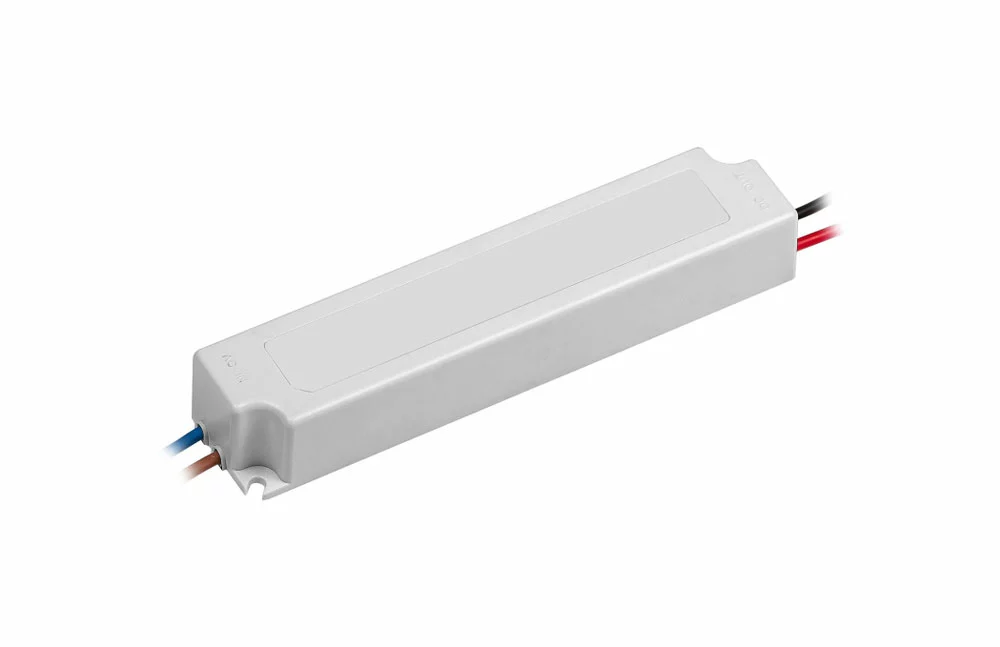
An LED strip light’s power supply
If these interventions don’t work, you might have to replace the light fixture as a whole. Pick a quality LED strip from the market to prevent these LED power drop issues and maintain high LED strip brightness.
Why LED Strip Lights Blink?
LEDs can blink due to the following reasons.
Insufficient Electric Current
LED strips need a specific amount of electricity. The LEDs will flicker if the transformer does not provide the required electrical current. In such a case, the LED driver might not be the right fit. You need to replace it with a power supply unit that provides sufficient energy.
Voltage Drops
Voltage drops can also cause blinking. The LED driver is responsible for converting AC from the main supply power source to DC. Issues with the standard mains supply power source or the transformer in the driver can cause voltage drops that flicker the LEDs.
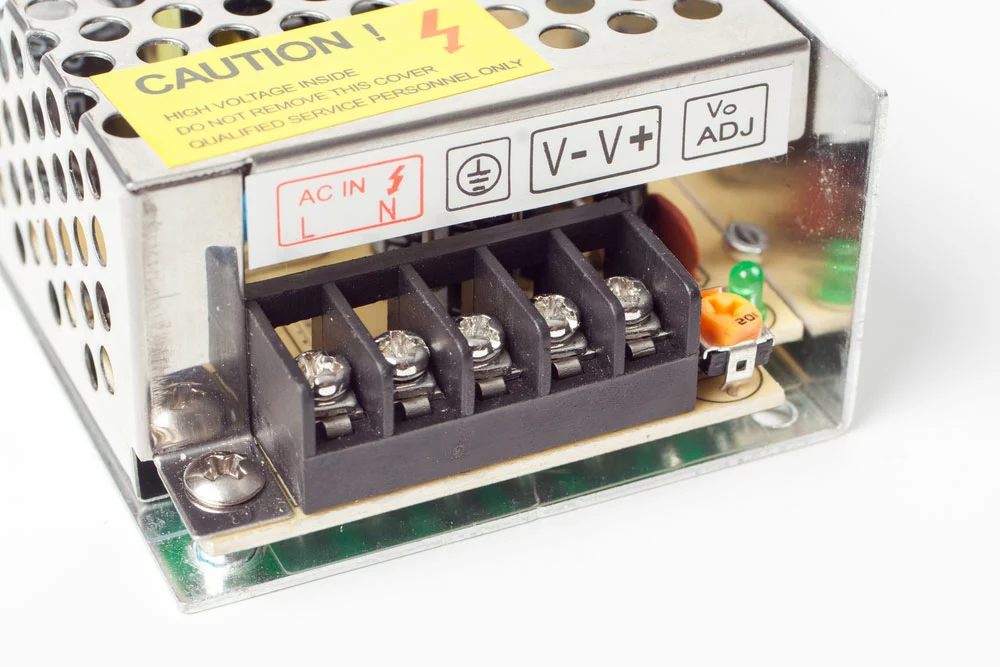
An LED strip’s power supply driver adapter. Note the AC input and DC output connection points.
Loose Connections
Loose connections to the power supply can cause arcing and interfere with the LED power flow. Check the connection points and use fitting cables.
Dust and Water
LED light sources, especially power strips, are fragile. Exposure to dust and water can cause them to blink or stop working. Therefore, you should mount the lights away from the elements.
Continuous Use
LEDs need some time to rest. If left on continuously day and night, they might flicker.
Why Do LED Strip Lights Turn Yellow
The most typical culprit is low build quality. Most people purchase mid-quality LED products because they are cheaper. The epoxy coating on these units might get ruined due to the heat and UV radiation from the diode’s blue light.
This degradation causes them to turn yellow and brown eventually. However, high-quality LED lighting products with glass or silicone encapsulations do not experience this issue.
Low-quality power supplies can also cause excess voltage or current to flow through the LED’s semiconductor material. Such conditions cause the chips to overheat and degrade, decreasing the light output gradually and causing yellowing. Eventually, such LEDs will fail.
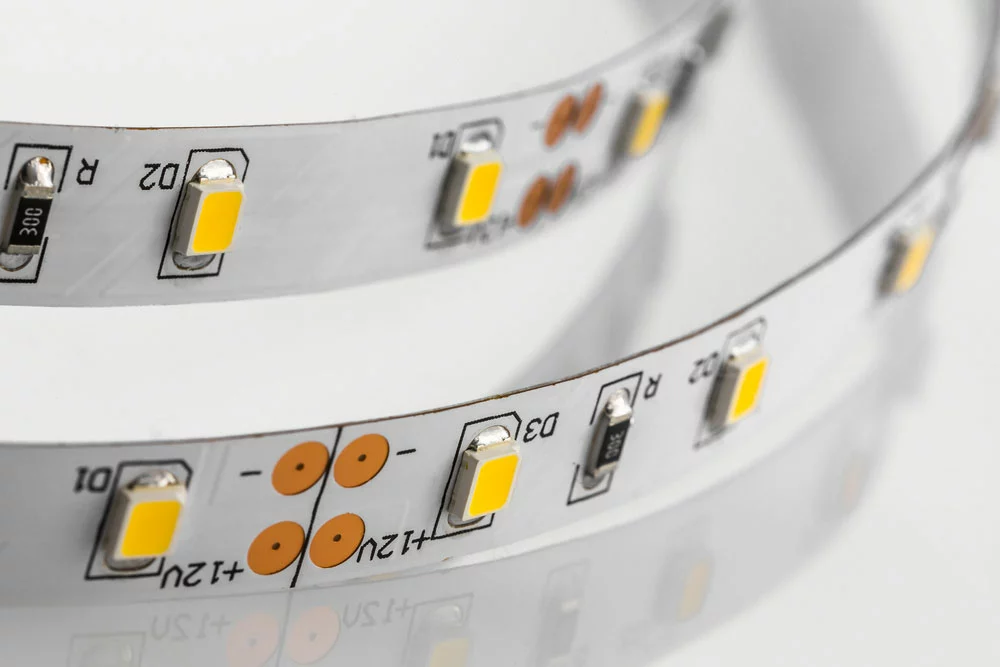
LED chips on a strip light
Besides quality, improper connections can cause bright blue-white color light LEDs to turn yellow. It is better to connect the LEDs in parallel than in series to prevent all the current flow from passing through the first strip. These first strips usually turn yellow and burn out faster than the rest. Also, the series lights will glow unevenly or flicker.
FAQ
Why Are Half of My LED Lights Not Working?
It could be due to several reasons, such as overheating, a broken/damaged connection on the strip, or a damaged chip.
How Do You Fix Discolored LED Light Strips?
Avoid exposing them to too much heat. Install an efficient ventilation or cooling system to keep the chips cool. This mechanism will prevent discoloration or halt the process if they have already begun turning.
How To Fix LED Lights Stuck on One Color?
Replace the driver to match the LED strip voltage requirements. If your LED strip lights require 24V but only receive 12V, they will stick to one color.
Summary
As you can see, LEDs can begin to change colors due to several reasons. But you can do something about it to make the strip lights produce their original light color. We hope this article has been insightful and if you still experience issues after trying the fixes above, contact us for more details.
